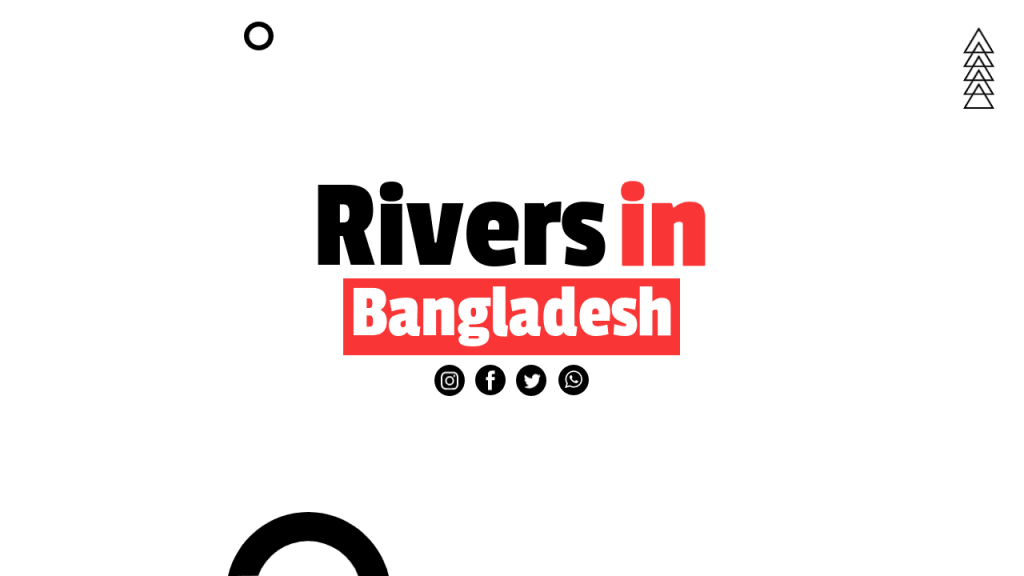
Rivers in Bangladesh
In Bangladesh, rivers are the lifeblood of the country’s economy. The country has four major river systems: Jamuna, Dhaka Bangali, and Bogra Karatoya. The main river is the Mymensingh Jheenai. This wide river flows at an average rate of 140,000 cubic meters per second during the monsoon season and 3,000 cubic meters per second during the dry season. According to the Bangladesh Water development board, there are 230 rivers in the country and most are under management.
The main rivers in Bangladesh are the Brahmaputra and the Jamuna. The former merge near Paturia and continue downstream as the Padma Nodi. The Padma River reaches the coast 250 km away. The Meghna Nodi joins the latter at Chandpur. The Brahmaputra enters the country in the northeast. Visit here The Meghna River, which originates in Burdwan, is one of Bangladesh’s three major rivers.
Read More: How to Do Affiliate Marketing in Bangladesh Using Mobile Phones
The Dhala-Dhala Gang lies in the Mogai-Chalti district. The Dhoai and Dhala Gang rivers flow in the Sylhet district. In the northern part of Bangladesh, the Dhala-Dhala Gang joins the Jamuna in a region called Mogai-Chalti. The Dhanu-Bauli river runs through Dhanu-Bauli district. The Dhoai river is located in the Dhamalia and Rajganj districts.
In Bangladesh, about sixty percent of its rivers are dead or near-dead. Eighty percent of its rivers have no depth at all. Most are used for agriculture and are the lifeblood of the country’s culture. A recent report found that pollution and illiterate farmers use a greater amount of agrochemicals in agriculture. Some NGOs and government officials have been accused of criminal activities. Despite these efforts, the government is moving forward on reclassification, which will allow it to lease the waterway to fish farms. Visit here
The Bangladeshi Supreme Court recently granted all rivers legal rights and has passed a law that allows those who damage river waters to be sued in court. In the country, people can sue on behalf of the rivers and other aquatic life. However, the death of the Bengali river system has caused significant damage and has affected the livelihood of hundreds of communities. There are floating markets in many areas of the country. Some of these communities have lost their livelihoods and specialised work on the water.
Aside from its economic importance, the river is also an important source of life for the people of Bangladesh. The country’s rivers are the lifeblood of a country, and the government has been working hard to protect them. During this period of rapid change, many countries have experienced severe disasters caused by floods and natural calamities. Despite these calamities, there are several river bodies that have been declared a living entity.
Also Read: Paragraph on Price-Hike for all class 6,7,8,9,10,HSC
The Padma-Meghna is the largest river in Bangladesh, and is the longest. It also has the most tributaries, which extend more than 700 km in total. While it may not be large, these rivers are vital for the country’s water supply. They provide freshwater to the people and make the country’s climate more bearable. In fact, many people depend on these water resources for their livelihood.
The Atrai River is one of the leading causes of flooding in certain parts of Bangladesh, while the Surma River, also known as the Barak, converges with the Jamuna to form the Meghna. These rivers in Bangladesh are influenced by human settlement in their catchment areas and face environmental problems. The Atrai, which is the second largest river in the country, is a 242 mile-long stream. Visit here
The Jamuna River, located in the north-western part of Dhaka, is a tributary of the Brahmaputra River. The Brahmaputra River originates in Tibet and flows into India through the Turag region in Dhaka. It is the second-longest river in Bangladesh. Its water quality varies greatly from year to year and even within one region.
The rivers in Bangladesh have a long history and are very important to the country’s economy. They contain many varieties of wildlife and are considered essential for the survival of many ecosystems. Some of them are migratory species and contribute significantly to the country’s economic wellbeing. As a result, they are crucial for the country’s economy. The rivers of Bangladesh are the lifeblood of the nation. They provide fresh water to cities, villages, and agricultural fields.


